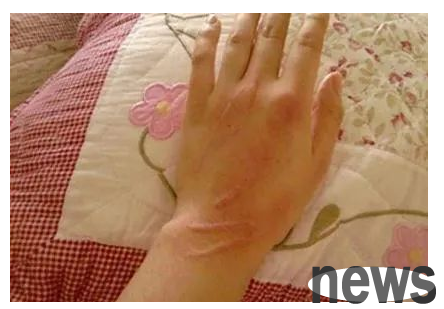Nowadays, keeping cats has gradually become a daily routine. Many families will keep one or two cats, but have you heard of cat-scratch disease? Next, let us take a look at the case of a patient with a rare disease called cat-scratch disease caused...
Nowadays, keeping cats has gradually become a daily routine. Many families will keep one or two cats, but have you heard of cat-scratch disease? Next, let us take a look at the case of a patient with a rare disease called cat-scratch disease caused by keeping a pet cat. On February 10, Jiangsu Subei People's Hospital admitted a patient with cat-scratch disease, a rare disease caused by keeping a pet cat. Two months ago, the patient, Ms. Wang, had swollen lymph nodes in her right groin, as big as an egg. Later, two small lymph nodes appeared in her left groin. Ms. Wang first came to the Hematology Department of North Jiangsu Hospital for diagnosis and treatment. After the hematologist ruled out lymphoma, he suspected lymphatic tuberculosis. He suggested that Ms. Wang go to the New District Branch of North Jiangsu People's Hospital for treatment and recommended contacting relevant experts from the New District Branch. After receiving the consultation, experts from the New District Branch of Subei People's Hospital identified and ruled out lymphatic tuberculosis and suggested that Ms. Wang undergo a pus gene sequencing examination. Ms. Wang performed further puncture examination to extract pus. After genetic sequencing of the pus, an infection with Bartonella henselae was detected, and Ms. Wang was diagnosed with rare cat-scratch disease.

Typical symptoms of the disease include skin lesions, erythema, papules, and local lymph node enlargement. Some patients may experience systemic symptoms such as fever, anorexia, and fatigue. After Ms. Wang was diagnosed with cat-scratch disease, she went to the Burns and Plastic Surgery Department of North District Hospital of Jiangsu People's Hospital for treatment. After admission, Director Xu Gang's burn and plastic surgery team attached great importance to it and carefully discussed the treatment plan. They first gave azithromycin and levofloxacin anti-infection combined with local dressing treatment. However, the skin of Ms. Wang's right thigh was seriously damaged and the pus could not be completely removed, making the wound difficult to heal. The enlarged lymph nodes were surgically removed, and the surrounding necrotic tissue was removed before the wound could be completely sutured. Recently, Ms. Wang’s wound has recovered well. According to doctors, cat-scratch disease is very rare. Its typical symptoms are skin lesions and swollen lymph nodes. 3-10 days after being scratched, bitten, or licked by a kitten, erythema and papules with a diameter of 3-4 mm may appear on the skin lesions. This primary skin lesion was considered the site of B. henselae inoculation. The disease is also very easy to misdiagnose because it is not easy to determine. Later, the patient Ms. Wang recalled that she had indeed bought a kitten at the flower and bird market seven or eight months ago and raised it for a while. During the epidemic in August last year, the kitten got lost. Ms. Wang was scratched by a cat once, but there was no obvious damage to her skin at that time, so she didn't care. Understanding Cat-Scratch Disease Cat-scratch disease, also known as benign lymph node reticulocytosis, is a systemic infectious disease. It is characterized by draining lymphadenitis and often has a history of being scratched or bitten by a cat. The "real culprit" that causes this disease is Bartonella. Domestic cats can maintain Bartonella bacteremia for a long time without getting sick. They are the storage hosts of Bartonella. Once people are scratched or bitten by cats and infected, they may suffer from cat scratch disease.
How to avoid contracting cat scratch disease?
· Regular deworming. External parasites such as fleas and lice are the main vectors of Bartonella. Deworming cats can effectively prevent cat scratch disease.
· Cats don’t need to be “walked”. Reducing the chance of going out will reduce the chance of contact with fleas, and also avoid contact with other "cats" that may be infected.
· Pay attention to hand hygiene. Wash your hands with soap and water after petting the cat, do not let the cat lick your wounds, and try to avoid teasing stray or feral cats as much as possible.
· Susceptible groups. People who are immunocompromised and have valvular heart disease should avoid cats (especially kittens).
After reading this article, I hope that families who raise cats will pay attention not to pet cats for fun, but also to take precautions.